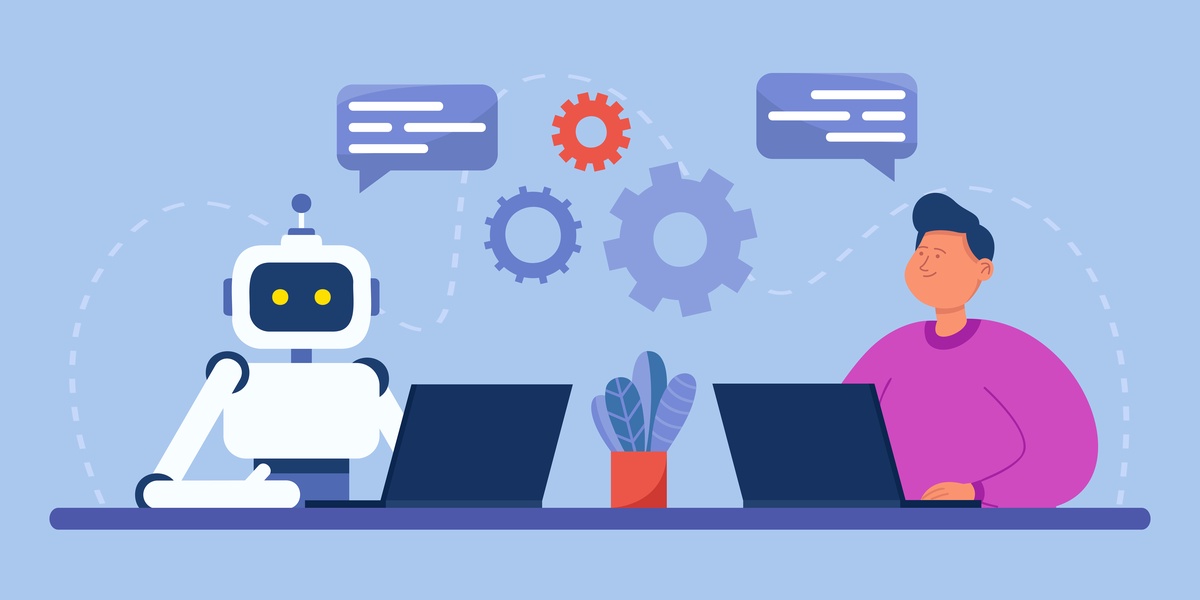The employment process can be automated thanks to artificial intelligence (AI). Current developments in the field, such as improvements in big data and machine learning, enable AI to hire, conduct background checks on candidates, and even forecast their compatibility and likelihood of success. Employers must decide if the technology is trustworthy enough to replace the conventional approaches. Some users are wary because they believe it will encourage racism and profiling while disqualifying qualified candidates. This article investigates how hiring AI recruiting software like Ducknowl can lessen bias and attract a wide range of suitably qualified applicants. It also underlines the significance of a comprehensive and varied dataset for developing AI models.
How AI is being applied in recruitment
AI is used in recruitment in a number of different ways, including:
1. Resume screening: Using algorithms, artificial intelligence (AI) can swiftly scan and analyze resumes to find keywords and skills that fit the job description.
2. Candidate matching: AI may match people to job descriptions based on skills, experience, and other criteria, assisting recruiters in finding the most qualified applicants for a position.
3. Interview Scheduling: Reduce the administrative burden on recruiters, AI can be used to arrange interviews and remind candidates to appear.
4. Video interviews: AI may review video interviews to evaluate candidate behavior, communication abilities, and other elements, assisting recruiters in determining which candidates are most suitable for a given position.
5. Chatbots: AI-driven chatbots may respond to inquiries from candidates and provide details about the business and the hiring process, enhancing the candidate experience and lightening the workload of recruiters.
6. Predictive analytics: AI can be used to examine information on previous hires and their performance, assisting recruiters in identifying the traits and abilities most likely to make a candidate successful in a given position.
What is bias in hiring
When bias or favoritism is present throughout the hiring process, candidates may be chosen based on factors such as color, gender, age, religion, and other personal qualities that are unrelated to job performance. Bias can result in a less diverse and less qualified pool of candidates at any level of the hiring process, from resume screening to the interview and review process. Some examples of hiring prejudice include:
1. Confirmation bias: This occurs when hiring managers or recruiters seek material that supports their preconceived notions about a candidate rather than considering them impartially.
2. Halo effect: This happens when a candidate's initial impression positively affects how their subsequent performance is judged.
3. Stereotyping: When a candidate is judged based on preconceived assumptions or preconceptions about their gender, color, or other personal attributes, stereotyping has taken place.
4. Affinity bias: This happens when a hiring manager or recruiter is more inclined to choose a candidate with a similar background, education, or experience.
How AI Can Enhance the Hiring Process and Reduce Bias
According to a London School of Economics team, 34% of recruiters believe AI will be essential in determining the future of recruiting procedures, according to a 2019 Gartner poll that indicated that about 37% of organizations had employed AI while hiring. Here are the ways you can use AI to fight unconscious bias.
Unconscious bias in job postings can be overcome with AI
A poorly written posting is problematic from both a diversity and recruitment marketing perspective. Employers might not be aware that some candidate groups may not be applying as a result of their job postings. Research has shown, for instance, that employing too many words with a masculine connotation in your job description may discourage female applicants from applying. By using sentiment analysis to find discriminatory language and suggesting alternatives that appeal to a more broad talent pool, AI-powered software can "de-bias" job advertising.
AI can reduce unconscious bias in resume screening
Millions of resumes can be rapidly screened by AI. AI-based software that employs machine learning to comprehend the requirements of a job can lessen unconscious prejudice. Instead of depending on (untested) rules of thumb like where someone went to school, AI accomplishes this by analyzing employee resume data and then selecting resumes of prospects who suit the description. AI recruiting software can be set to ignore demographic data like gender, race, and age as well as proxies for race and socioeconomic position such as addresses and names of schools attended in order to further eliminate unconscious bias during the screening stage. Resume screening may be mind-numbing for human recruiters, but pattern-matching AI was explicitly designed for it since it is resistant to the mental tiredness, presumptions, and biases that plague people.
AI can identify unconscious prejudice across your entire hiring process.
Any human bias that may already be present in your hiring process can be learned by the AI because it is trained to recognize previous patterns. Thus, human control is still required to make sure AI is not reinforcing or creating new prejudices. By examining the demographic mix of your new hires and comparing it to the entire candidate pool, you may check your recruiting process for bias. The good news is that AI can locate instances of prejudice more quickly and precisely than a human can.
Also, read: Top Artificial Intelligence Trends in Business


No comments yet